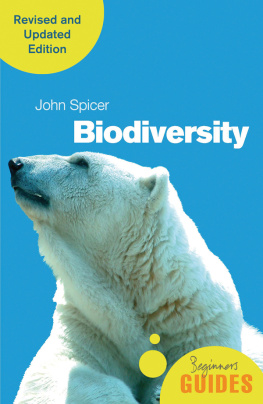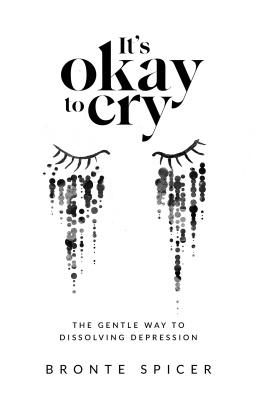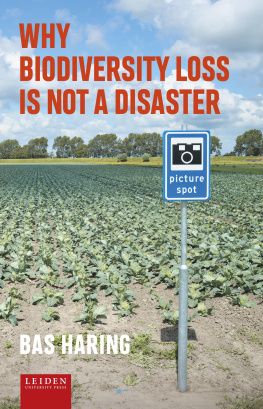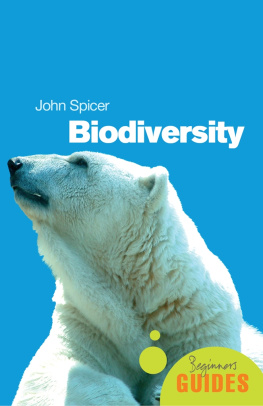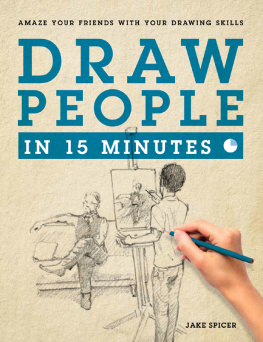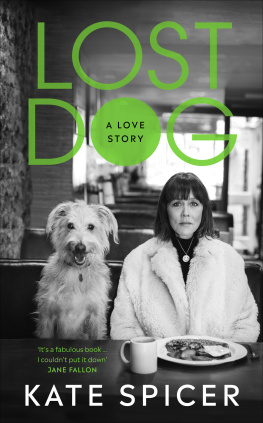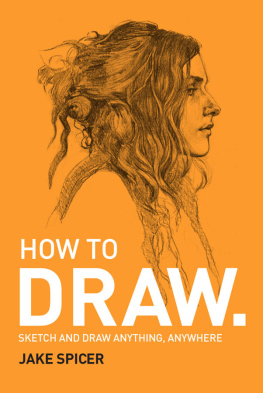John Spicer - Biodiversity
Here you can read online John Spicer - Biodiversity full text of the book (entire story) in english for free. Download pdf and epub, get meaning, cover and reviews about this ebook. publisher: Oneworld Publications, genre: Children. Description of the work, (preface) as well as reviews are available. Best literature library LitArk.com created for fans of good reading and offers a wide selection of genres:
Romance novel
Science fiction
Adventure
Detective
Science
History
Home and family
Prose
Art
Politics
Computer
Non-fiction
Religion
Business
Children
Humor
Choose a favorite category and find really read worthwhile books. Enjoy immersion in the world of imagination, feel the emotions of the characters or learn something new for yourself, make an fascinating discovery.
- Book:Biodiversity
- Author:
- Publisher:Oneworld Publications
- Genre:
- Rating:5 / 5
- Favourites:Add to favourites
- Your mark:
- 100
- 1
- 2
- 3
- 4
- 5
Biodiversity: summary, description and annotation
We offer to read an annotation, description, summary or preface (depends on what the author of the book "Biodiversity" wrote himself). If you haven't found the necessary information about the book — write in the comments, we will try to find it.
Biodiversity — read online for free the complete book (whole text) full work
Below is the text of the book, divided by pages. System saving the place of the last page read, allows you to conveniently read the book "Biodiversity" online for free, without having to search again every time where you left off. Put a bookmark, and you can go to the page where you finished reading at any time.
Font size:
Interval:
Bookmark:

Biodiversity
A Beginners Guide
ONEWORLD BEGINNERS GUIDES combine an original, inventive, and engaging approach with expert analysis on subjects ranging from art and history to religion and politics, and everything in-between. Innovative and affordable, books in the series are perfect for anyone curious about the way the world works and the big ideas of our time.
aesthetics
africa
american politics
anarchism
ancient philosophy
animal behaviour
anthropology
anti-capitalism
aquinas
archaeology
art
artificial intelligence
the bahai faith
the beat generation
the bible
biodiversity
bioterror & biowarfare
the brain
british politics
the Buddha
cancer
censorship
christianity
civil liberties
classical music
climate change
cloning
the cold war
conservation
crimes against humanity
criminal psychology
critical thinking
the crusades
daoism
democracy
descartes
dewey
dyslexia
economics
energy
engineering
the english civil wars
the enlightenment
epistemology
ethics
the european union
evolution
evolutionary psychology
existentialism
fair trade
feminism
forensic science
french literature
the french revolution
genetics
global terrorism
hinduism
history
the history of medicine
history of science
homer
humanism
huxley
international relations
iran
islamic philosophy
the islamic veil
jazz
journalism
judaism
justice
lacan
life in the universe
literary theory
machiavelli
mafia & organized crime
magic
marx
medieval philosophy
the middle east
modern slavery
NATO
the new testament
nietzsche
nineteenth-century art
the northern ireland conflict
nutrition
oil
opera
the palestineisraeli conflict
parapsychology
particle physics
paul
philosophy
philosophy of mind
philosophy of religion
philosophy of science
planet earth
postmodernism
psychology
quantum physics
the quran
racism
rawls
reductionism
religion
renaissance art
the roman empire
the russian revolution
shakespeare
shii islam
the small arms trade
stalin
sufism
the torah
the united nations
the victorians
volcanoes
war
the world trade organization
world war II
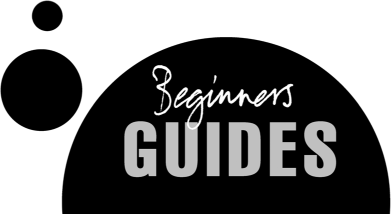
A Beginners Guide
John Spicer

For Fiona, my fair one
Through history, the most important changes in society have come from the bottom up, from grassroots.
Greta Thunberg
It is now fifteen years since Biodiversity: A Beginners Guide was published. In the intervening period, in one sense so much has changed and at the same time little has changed. We are still losing and damaging biodiversity, but now faster than ever before the pace of change has accelerated. Previously, to the nearest approximation every species was an insect. Now it is becoming clear that to the nearest approximation every species is a microbe. The importance of viruses to biodiversity is clearer than it ever was in the past what they are, how they work, and how they originate and evolve and not just because of SARS-CoV-2 (the name of the virus, not a bacterium, whereas COVID-19 is the disease), although admittedly thats been difficult to miss. And while the general format of the book is roughly the same, it has had to change to accommodate not just new and updated material but new ways of thinking about that material and what it means.
And while the purpose of the book is essentially the same, to act as a beginners guide to biodiversity, the way that aim is now approached is slightly different more than ever I see this as a book hopefully to astound, but also to shock the senses, challenge thinking, and to whet the appetite for greater and deeper knowledge and understanding. That is why the reading list has been greatly expanded, to act as a gateway to the academic or further study of biodiversity, at school, university or at home, and as an introduction to the wealth of books that are already out there and to bridge the academicpopular divide.
My thanks to Mark Lord-Lear for reading and commenting on early versions of Chapter 6, and to Jon Bentley-Smith, of Oneworld, for his excellent editorial assistance, and for that greatest of editor-virtues, patience tinged with empathy. Thanks also to all who wrote to me suggesting changes, additions and corrections to the first edition I have tried to make sure Ive incorporated or addressed them in this new edition. As with the first edition, this new text will not always satisfy everyone, particularly those whose research speciality is an area of biodiversity that I barely touch on, dont include or, even worse, that they dont feel I do justice to. I dont believe any one person could produce a comprehensive book on all of biodiversity, even if we could agree on what biodiversity is in the first place. Instead I have tried to tell not the, but a story of biodiversity what it is, where it is, how it got here, how we value it, how its threatened, how it can be maintained to tell it as a story that interests me, in the hope that it may interest others too.
It is said that books are best written in community. Over the past fifteen years I have been extraordinarily fortunate in the scientists I have worked with or for. They have made a lasting impression on what I know and believe about biodiversity, and this book would not have been written without their input in so many ways. Thanks to Lorraine Maltby, Phil Warren, Dave Morritt and Kevin Gaston for providing such a stimulating environment in which to work and think when I was at the University of Sheffield, and Kevin in particular as he opened my eyes to the notion that biodiversity is a serious science. I feel privileged to have spent so much of my time at Sheffield discussing, investigating and writing with Kevin, and I thank him for allowing me to use the same broad outline for introducing novices to biodiversity that we came up with in the Rising Sun so many years ago.
I also thank my present colleagues, the members of the Marine Biology and Ecology Research Centre here at Plymouth Rikka, Simon, Dave, the Bish, Kath, Mark, Martin, Pete, Andy, Paul, Miguel, Mal, Kerry, Jason and Steve for their friendship and for making going into work on a Monday morning something to look forward to; all of the postgraduate students, postdoctoral fellows and academic staff with whom I have had the honour of adding just a little to our knowledge of what biodiversity is and how it works Sally Marsh, Kirsten Richardson, Jeanette Sanders, David Johns, Tony Hawkins, Steve Widdicombe, Nick Hardman-Mountford, Mike Kendall, Nikki Dawdry, Jenny Smirthwaite, Kate Arnold, Lucy Dando, Emily Hodgson, Anne Masson, Sanna Eriksson, Susie Pihl Baden, Jalle Strmberg, Peter Tiselius, Jenny Cowling, Jason Weeks, Andy Rees, Mona Mabrouk El-Gamal, the inimitable Dave Morritt, Alan Taylor, Andy Hill, Stuart Anderson, Warren Burggren, Roy Weber, Brian McMahon, Peter Duncan, Katherine Turner, Alistair Edwards, Peter Spencer Davies, Maria Thomasson, Bengt Liljebladh, Paul Bradley, Angela Raffo, Hayley Miles, Ula Janas, Hugh Tabel, Tim Blackburn and the inspirational Geoff Moore who, as well as co-supervising my doctorate, first opened up to me the wonder and science which characterises the best of biodiversity as an academic subject. I am grateful to Roger Byrne and Mick Uttley, two of the sharpest minds Ive ever encountered, for their detailed feedback on the manuscript and Marsha Filion of Oneworld who also made helpful comments on the manuscript. Suffice to say none of the above are responsible for any errors, omissions, transgression or biases that remain. Although too numerous to mention by name, I certainly owe a large debt to all my undergraduate students who have taught me so much as they caught on to how exciting and threatened our biodiversity is.
Font size:
Interval:
Bookmark:
Similar books «Biodiversity»
Look at similar books to Biodiversity. We have selected literature similar in name and meaning in the hope of providing readers with more options to find new, interesting, not yet read works.
Discussion, reviews of the book Biodiversity and just readers' own opinions. Leave your comments, write what you think about the work, its meaning or the main characters. Specify what exactly you liked and what you didn't like, and why you think so.

